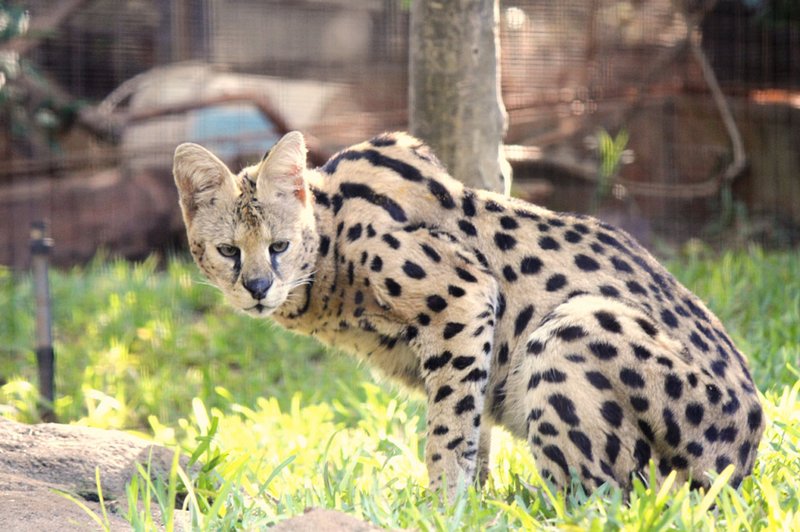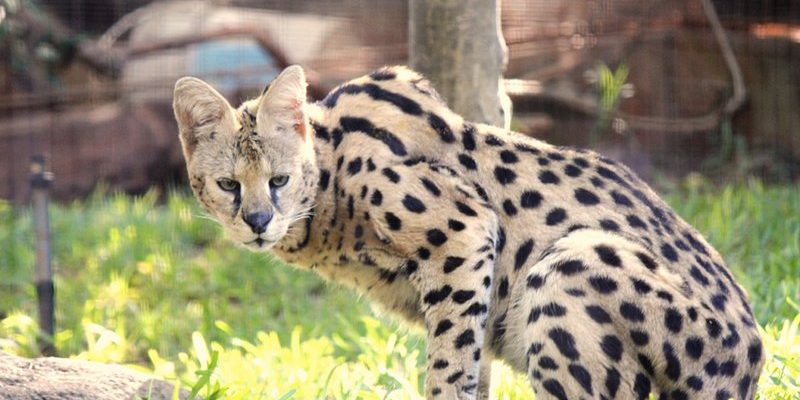
The serval is primarily found in sub-Saharan Africa, thriving in grasslands, wetlands, and even savannahs. Just picture a sleek cat, effortlessly leaping to catch a mouse or a bird, showcasing its incredible hunting skills. By maintaining populations of small mammals and birds, the serval ensures that no one species dominates the ecosystem. This delicate balance is vital—not just for the serval but for many other creatures that call these habitats home.
So, why should we care about these graceful cats? Understanding the serval’s role in its ecosystem helps us appreciate the intricate connections between predators and prey, as well as the health of the environment itself. Now, let’s dive deeper into the serval’s world and explore its role in sustaining the ecosystem.
1. The Serval: A Quick Overview
The serval (Leptailurus serval) is a medium-sized wild cat known for its unique appearance. With a sleek body, long legs, and large ears, this cat can reach up to 40 inches in length and weigh between 20 to 40 pounds. One of the serval’s most remarkable features is its ability to jump up to ten feet in the air! This impressive skill helps it catch birds mid-flight.
These cats are primarily nocturnal, which means they are most active during the night. This hunting style allows them to avoid competition from larger predators like lions and hyenas. Servals rely on their keen eyesight and exceptional hearing, which are essential for detecting small prey such as rodents, birds, and insects.
The serval’s fur is beautifully patterned with spots and stripes, making it blend seamlessly into the tall grasses of its habitat. This camouflage plays a crucial role in its hunting strategy, enabling the serval to stalk its prey without being detected.
2. The Serval as a Predator
Here’s the thing: servals are agile hunters. Their primary role in the ecosystem is that of a predator, keeping populations of small mammals and birds in check. This helps to prevent overpopulation, which can lead to resource depletion and a breakdown of the food chain.
Servals primarily hunt small rodents, like field mice, and birds. They use their acute senses to locate prey, often listening for the faintest sounds. Once spotted, they employ impressive leaps to catch their meals, showcasing their incredible agility.
In many ways, servals are like nature’s pest control. By managing the populations of smaller species, they indirectly support a healthier ecosystem. When these prey populations are kept in balance, it allows for a diverse range of plants and animals to thrive, contributing to overall biodiversity.
3. The Serval’s Impact on Biodiversity
Biodiversity refers to the variety of life in a particular ecosystem. Just like a well-balanced recipe requires different ingredients, a healthy ecosystem needs a variety of species to flourish. Servals contribute to biodiversity by serving as both predator and prey.
As a predator, the serval helps control populations of small mammals and birds, preventing any single species from dominating. This balance ensures that various species coexist, supporting the complex web of life. It’s a bit like a game of Jenga—remove one piece, and the whole structure becomes unstable.
Moreover, servals are prey for larger predators, including leopards and lions. This predatory relationship adds another layer of complexity to the ecosystem. They provide food for these larger carnivores, which helps maintain the flow of energy through the food chain.
4. The Serval and Its Habitat
Servals are closely tied to their habitats, which typically include grasslands, wetlands, and even some forested areas. These environments provide the perfect hunting grounds for servals, rich with the small animals they prey on.
The health of these habitats directly affects the serval population. If the grasslands are overgrazed or wetlands are drained, it can lead to a decline in prey availability. This, in turn, impacts the servals and other predators that depend on those small mammals. Healthy ecosystems need to be preserved to maintain the balance of life.
Conservation efforts aimed at protecting serval habitats also benefit a wide range of other species. By safeguarding the grasslands and wetlands where servals thrive, we’re also helping countless other animals and plants that share that space.
5. Threats to the Serval Population
Unfortunately, servals face several threats that jeopardize their survival and, by extension, the health of their ecosystems. Habitat loss is one of the most significant risks. Urbanization, agriculture, and deforestation are encroaching on their natural habitats, leaving servals with fewer places to hunt and live.
Additionally, servals are sometimes hunted for their beautiful fur. This illegal wildlife trade further diminishes their populations. When servals are removed from their environment, it can disrupt the delicate balance they help maintain.
Conservation programs are essential in combating these threats. By protecting serval habitats and raising awareness about their ecological importance, we can work to ensure that these unique cats continue to play their vital role in nature.
6. Conservation Efforts for Servals
Many organizations and conservationists are dedicated to protecting servals and their habitats. These efforts often focus on preserving and restoring the ecosystems where servals thrive.
One effective strategy involves creating protected areas, such as national parks and reserves. By safeguarding these spaces from development and agriculture, we can provide safe habitats for servals and other wildlife.
Education and community involvement are also key components of conservation efforts. Engaging local communities in wildlife protection initiatives can foster a sense of stewardship. When people understand the importance of servals in maintaining a balanced ecosystem, they’re more likely to support conservation efforts.
7. Why the Serval Matters to Us
So, why should we care about the serval? Beyond its beauty and charisma, the serval serves as an indicator of ecosystem health. If servals are thriving, it often means the environment is in good shape. They remind us that every creature plays a role, no matter how small.
Caring for servals and their habitats also helps protect countless other species. By ensuring that these fascinating felines continue to roam the African landscapes, we’re supporting the entire web of life that depends on them.
In a world where environmental changes are increasingly common, the serval stands as a vital reminder of the interconnectedness of life. Keeping this balance isn’t just about saving a beautiful cat—it’s about preserving the future of our planet.
As we continue to explore and learn about the serval, let’s remember the importance of protecting these incredible creatures, their habitats, and the ecosystems they help sustain. The serval’s role is significant, and our actions can ensure their legacy.

